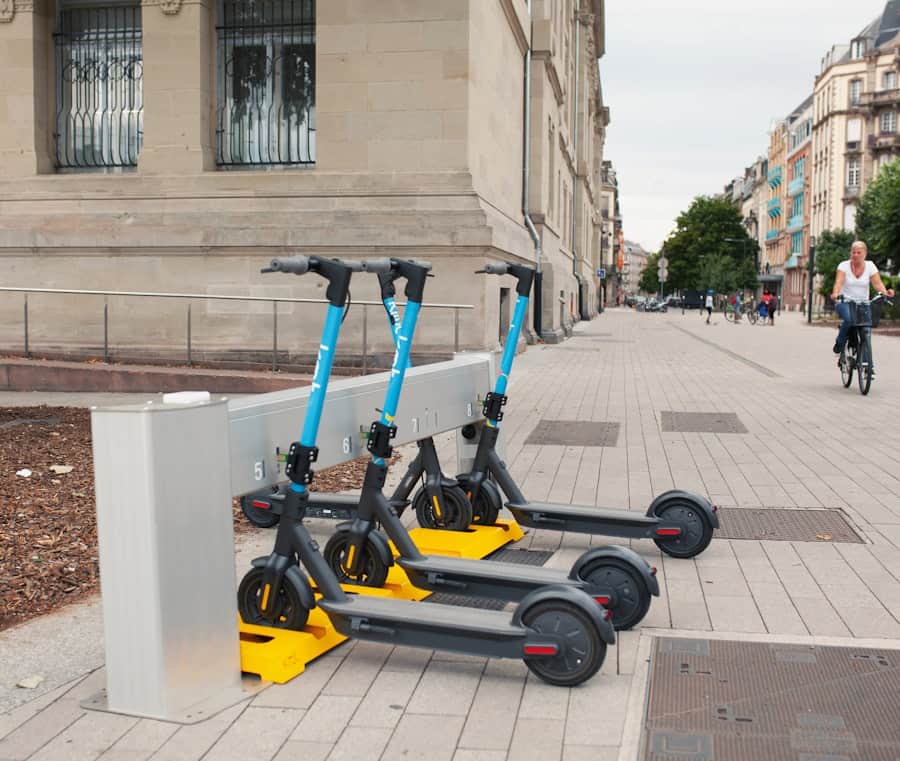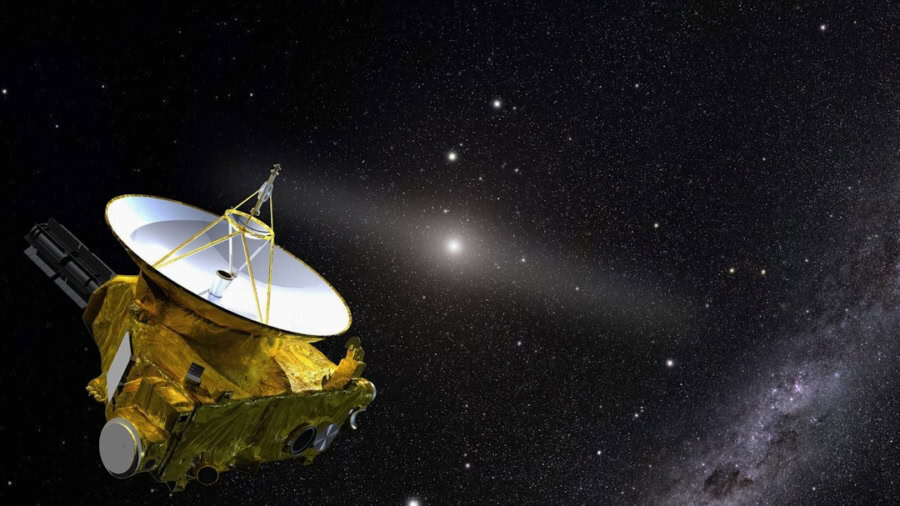The advent of autonomous spacecraft marks a significant milestone in the evolution of space exploration. These sophisticated machines are designed to operate independently, utilizing advanced algorithms and artificial intelligence to make real-time decisions without direct human intervention. The concept of autonomy in spacecraft is not merely a technological enhancement; it represents a paradigm shift in how we approach the challenges of exploring the cosmos.
As missions become more ambitious, venturing further into the depths of space, the need for autonomous systems becomes increasingly critical. Autonomous spacecraft are equipped with a variety of sensors and instruments that allow them to gather data, analyze their surroundings, and execute complex tasks. This capability is particularly vital in deep space missions, where communication delays with Earth can span several minutes or even hours.
The ability to process information and respond to changing conditions in real-time enables these spacecraft to navigate uncharted territories, conduct scientific experiments, and even perform repairs without waiting for instructions from mission control. As we delve deeper into the universe, the role of autonomous spacecraft will only grow in importance, paving the way for new discoveries and advancements in our understanding of space.
Key Takeaways
- Autonomous spacecraft are unmanned vehicles designed to operate in space without direct human control, using onboard systems to make decisions and carry out tasks.
- Advantages of autonomous spacecraft in deep space missions include reduced communication delays, increased mission flexibility, and the ability to react to unexpected events without human intervention.
- Challenges of implementing autonomous systems in space include the need for robust and reliable software, the potential for system errors, and the ethical implications of autonomous decision-making in space.
- Navigation and communication for autonomous spacecraft rely on advanced sensors, artificial intelligence, and autonomous decision-making algorithms to ensure safe and accurate operation.
- Examples of successful autonomous spacecraft missions include NASA’s Mars rovers, which have autonomously navigated the Martian surface and conducted scientific experiments without direct human control.
- Future applications of autonomous spacecraft in deep space exploration may include asteroid mining, interstellar probes, and the search for extraterrestrial life.
- Ethical and legal considerations of autonomous spacecraft include questions of liability for autonomous decision-making, the potential for unintended consequences, and the need for international cooperation in space exploration.
- In conclusion, autonomous spacecraft have the potential to revolutionize space exploration by enabling new missions and capabilities, but also raise important ethical and legal questions that must be addressed as the technology advances.
Advantages of Autonomous Spacecraft in Deep Space Missions
Autonomous spacecraft offer numerous benefits, particularly in environments where human presence is impossible or impractical.
Overcoming Environmental Challenges
Missions to distant planets or moons often involve long travel times and harsh conditions that would be detrimental to human life. Autonomous systems can endure these extreme environments, conducting research and gathering data that would otherwise be unattainable.
Enhancing Scientific Knowledge and Reducing Risks
This capability not only enhances our scientific knowledge but also reduces the risks associated with human spaceflight. Moreover, autonomous spacecraft can significantly increase mission efficiency. By processing data on board and making decisions in real-time, these systems can adapt to unforeseen circumstances, such as equipment malfunctions or unexpected obstacles.
Flexibility and Efficiency in Space Exploration
For example, if an autonomous rover encounters a rocky terrain on Mars, it can analyze the situation and choose an alternative route without waiting for commands from Earth. This flexibility allows for more thorough exploration and maximizes the potential for scientific discovery. Additionally, the reduction in communication delays means that missions can be executed more swiftly, leading to a more effective use of resources and time.
Challenges of Implementing Autonomous Systems in Space

Despite the numerous advantages, implementing autonomous systems in space is fraught with challenges. One significant hurdle is the complexity of developing reliable algorithms that can function effectively in unpredictable environments. Space is inherently chaotic, with variables such as radiation, microgravity, and extreme temperatures posing risks to both hardware and software.
Engineers must ensure that autonomous systems can withstand these conditions while maintaining operational integrity. Another challenge lies in the need for robust decision-making capabilities. Autonomous spacecraft must be programmed to handle a wide range of scenarios, from routine operations to emergency situations.
This requires sophisticated artificial intelligence that can learn from experience and adapt its responses accordingly. The development of such systems necessitates extensive testing and validation to ensure they can perform reliably over extended periods, especially given the limited opportunities for troubleshooting once a mission is underway.
Navigation and Communication for Autonomous Spacecraft
Effective navigation and communication are critical components of autonomous spacecraft operations. In deep space, traditional navigation methods may not suffice due to the vast distances involved and the lack of GPS signals. Instead, autonomous spacecraft rely on a combination of onboard sensors, star trackers, and inertial measurement units to determine their position and orientation.
These systems must work together seamlessly to provide accurate navigation data, allowing the spacecraft to execute its mission objectives. Communication poses another layer of complexity for autonomous spacecraft. The vast distances between Earth and deep space destinations result in significant time delays in signal transmission.
For instance, a message sent from Earth to Mars can take anywhere from 4 to 24 minutes to arrive, depending on their relative positions in their orbits. To mitigate this issue, autonomous spacecraft are designed to operate independently during critical phases of their missions, such as landing or navigating through asteroid fields. They must be equipped with advanced communication systems that allow them to relay important data back to mission control while also processing information locally.
Examples of Successful Autonomous Spacecraft Missions
Several successful missions have demonstrated the capabilities of autonomous spacecraft in deep space exploration. One notable example is NASA’s Mars Rover Perseverance, which landed on Mars in February 2021. Equipped with advanced AI algorithms, Perseverance can navigate the Martian terrain autonomously, selecting its own paths while avoiding obstacles.
This autonomy allows it to cover more ground and conduct scientific experiments without waiting for instructions from Earth.
Rosetta’s autonomous systems enabled it to perform complex maneuvers as it approached the comet, adjusting its trajectory based on real-time data collected by its instruments.
The mission provided invaluable insights into the composition of comets and their role in the solar system’s formation.
Future Applications of Autonomous Spacecraft in Deep Space Exploration

Swarm Exploration
One potential area of development is the use of swarms of small autonomous spacecraft that can work collaboratively to explore celestial bodies. These swarms could cover larger areas than a single spacecraft while sharing data and resources among themselves.
Enhanced Scientific Investigations
Such an approach could enhance our understanding of planetary systems and facilitate more comprehensive scientific investigations. Autonomous spacecraft could provide unparalleled insights into the workings of our solar system and beyond.
Sustainable Resource Utilization
Autonomous spacecraft could also play a crucial role in resource utilization on other planets or moons. For instance, missions aimed at mining asteroids or extracting water from lunar ice deposits could benefit from autonomous systems capable of identifying viable resources and executing extraction processes without human oversight. This capability would not only support future manned missions but also lay the groundwork for sustainable off-Earth operations.
Ethical and Legal Considerations of Autonomous Spacecraft
As we advance towards greater autonomy in space exploration, ethical and legal considerations become increasingly pertinent. One major concern revolves around decision-making processes within autonomous systems. If an autonomous spacecraft encounters a situation where it must make a choice that could impact its mission or even other celestial bodies—such as prioritizing data collection over avoiding potential contamination—who is responsible for those decisions?
The delegation of authority to machines raises questions about accountability and moral responsibility. Furthermore, there are legal implications regarding the use of autonomous spacecraft in space exploration. The Outer Space Treaty of 1967 establishes guidelines for international space activities but does not specifically address the complexities introduced by autonomous systems.
As nations continue to develop their own autonomous technologies for space exploration, there is a pressing need for international agreements that govern their use and ensure compliance with ethical standards.
The Impact of Autonomous Spacecraft on the Future of Space Exploration
The impact of autonomous spacecraft on the future of space exploration cannot be overstated.
By reducing reliance on human presence and enhancing operational efficiency, autonomous spacecraft will allow us to explore distant worlds with unprecedented depth and detail.
As we look ahead, it is clear that the integration of autonomy into space missions will continue to evolve alongside advancements in technology and artificial intelligence. The challenges we face today will pave the way for innovative solutions that enhance our capabilities in space exploration while addressing ethical and legal considerations. Ultimately, autonomous spacecraft represent not just a technological advancement but a new frontier in our quest to understand the cosmos and our place within it.
In a related article discussing the latest advancements in technology, Samsung Galaxy S23 Review highlights the innovative features of the new smartphone. The article explores how Samsung continues to push the boundaries of technology, much like how autonomous spacecraft are revolutionizing deep space missions. To read more about cutting-edge technology, check out the Samsung Galaxy S23 Review.
FAQs
What are autonomous spacecraft?
Autonomous spacecraft are vehicles that can operate and make decisions without direct human control. They are equipped with advanced systems and sensors that allow them to navigate, communicate, and perform tasks independently.
How do autonomous spacecraft revolutionize deep space missions?
Autonomous spacecraft revolutionize deep space missions by reducing the need for constant communication with Earth, enabling faster decision-making, and allowing for more efficient use of resources. They can also adapt to unexpected situations and perform complex tasks without human intervention.
What are the advantages of using autonomous spacecraft for deep space missions?
The advantages of using autonomous spacecraft for deep space missions include increased flexibility, reduced communication delays, improved efficiency, and the ability to explore more distant and challenging environments. They also reduce the risk to human astronauts and enable longer-duration missions.
What technologies enable spacecraft to operate autonomously?
Technologies that enable spacecraft to operate autonomously include advanced navigation systems, artificial intelligence, machine learning, computer vision, and autonomous decision-making algorithms. These technologies allow spacecraft to analyze data, make decisions, and execute tasks without human input.
What are some examples of autonomous spacecraft missions?
Some examples of autonomous spacecraft missions include NASA’s Mars rovers, such as Curiosity and Perseverance, which can navigate the Martian surface and perform scientific experiments without direct human control. Other examples include spacecraft that explore asteroids, comets, and other celestial bodies in the solar system.

